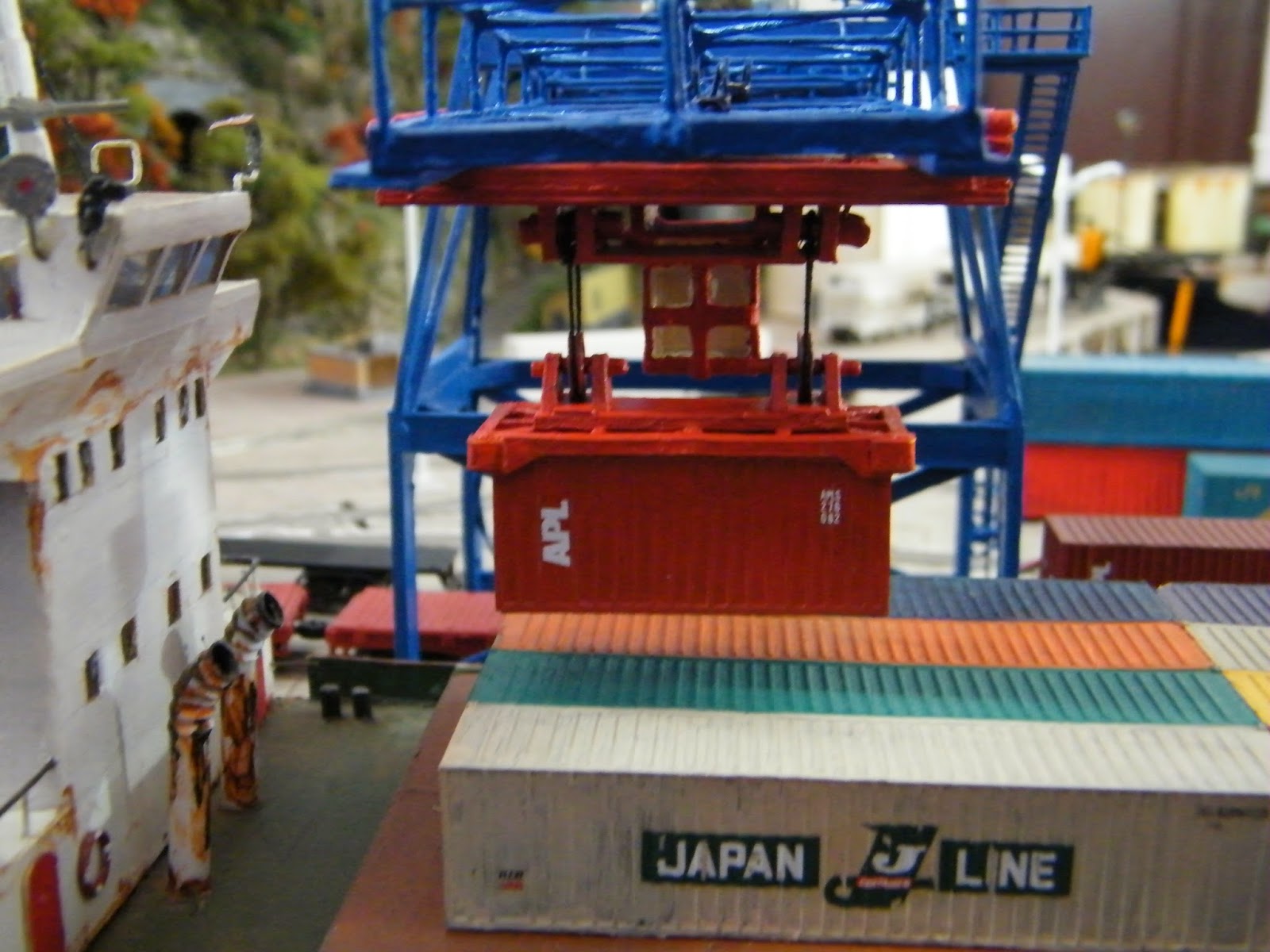The next step was to complete the spreader.
Next step was to paint all the components red, cut OHP sheets of appropriate sizes and create the glass cover of the cabin, and then finally put everything together to finish the assembly. Notice that I still have interiors to complete inside the cabin (awaiting orders), and kept the provision of removing it.
Finally, here is the complete mechanism to move containers to and from the ship:
The Spreader, as shown in the second part of this build thread, will be movable to increase variety of positions during photography session. Also, I had to arrange for a mechanism so that I can keep changing the containers from time to time.
So first, I created a cardboard frame that can simply hold my 'Fine N Scale' 20' containers from top and maintain a good grip throughout. The trick is that the inside dimension of this cardboard frame is just a tiny fraction larger than the outside dimension of the container - to the naked eye it is actually the same unless you use a caliper to measure it.You might ask how I did it without using the caliper though - simple when I drew the dimension on the cardboard with a sharp pencil, I'd cut the cardboard on the 'outside' of the line, not on it - takes a good degree of precision, true, but given I am working this stuff for so long, I think my motor skills can take those challenges! :-P
Once I tested the effectiveness of the frame by lifting and shaking it several times while it holds the container, I started building the support. I used some really old stock of Micro Engineering wooden ties.
Then I started working on the pulleys. I went for the more simplistic design add just two pulleys on two sides - given we are talking about really first generation container cranes, I think that is still prototypical. I took a couple of Grandt Line small wagon wheels, curved groove along the edge, and voila - I have my pulleys! It was then just a matter of creating simple housing for them and attaching them the the spreader.
Next step was to create the hoist mechanism on the trolley. I went for a covered approach this time, more for stability, and for the fact detailing of that part will be hardly visible. As you can notice, I had to use 'tying' it up with the trolley to ensure durability!
The next step was to create the cabin. I drew the complete dimensions on a cardboard first and then cut it precisely using my hobby knife. Once done, just folding it and gluing it in appropriate places is all that you need to do.
Next step was to paint all the components red, cut OHP sheets of appropriate sizes and create the glass cover of the cabin, and then finally put everything together to finish the assembly. Notice that I still have interiors to complete inside the cabin (awaiting orders), and kept the provision of removing it.
Finally, here is the complete mechanism to move containers to and from the ship:
Coming up - final bits of detailing - counter weight, beam draw mechanism and the links. Then I'm done with this one! :)
































